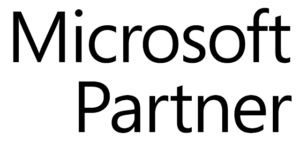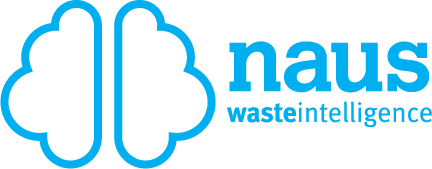‘A Forward-Thinking Company’ – Western Metropolitan Regional Council Case Study
In this case study, we will be discussing the Western Metropolitan Regional Council, what it is, how it was formed, the challenges they faced along with the benefits and outcomes their regional group obtained by working with Mandalay.
About the Western Metropolitan Regional Council
The Western Metropolitan Regional Council (WMRC) is a local government organisation established around 30 years ago by agreement amongst its five small inner suburban member Councils. It is made up of the Towns of Claremont, Cottesloe and Mosman Park; the Shire of Peppermint Grove and the City of Subiaco.
When WMRC was formed, the old regional landfill disposal site in Claremont was not far off closure and Perth’s western suburbs would have to rely on remote disposal sites. Transport efficiency was therefore an essential element for municipal waste management services, so the initial objective for the WMRC was to construct and operate a waste transfer station.
Increasingly over the past 30 years, waste minimisation, reuse and recycling have been seen as vital to environmentally responsible waste management in the region, so the WMRC soon established community recycling services at the new waste transfer station. Waste education and communication have also figured prominently amongst its activities from the outset.
How the WMRC Benefits Member Councils
The WMRC’s member councils in Perth’s central western suburbs are all small, providing services to council areas ranging from just 600 households in the Shire of Peppermint Grove to 7,200 in the City of Subiaco. As such it would be costly and inefficient for them each to have specialist in-house waste management expertise and services, so the shared services model which the WMRC embodies to this day made perfect sense.
This model allows member councils to benefit from WMRC’s economies of scale in waste management services that extend to:
- Efficient waste transfer
- Procurement of waste haulage, treatment and disposal services
- Waste education and communication
- Waste management planning
- Community recycling drop-off services
- Waste management advocacy in representing the interests of member councils to State and Federal government.
The Challenges of Multiple Stakeholders
The WMRC is governed by five councillors, each appointed by their respective member council. This ensures the perspective of each of the WMRC’s member councils is represented in strategy, policy, and major operational decisions.
In addition, and unusually for a regional council, the WMRC services many residents from adjoining councils, with the transfer facility, now known as the West Metro Recycling Centre, being located within the boundaries of the City of Nedlands and on the doorstep of the Town of Cambridge. This has meant that WMRC has had to scale its waste management services to meet the demands of a population of close to 100,000 – more than double that of its member councils’ 47,000 people.
This has presented particular challenges for the WMRC as its member councils were funding extensive community recycling services being used by larger neighbouring councils. This decades old problem is well on the way to being resolved.
The Town of Cambridge has come aboard as a Participating Council, whereby the Council contributes to the cost of WMRC’s community recycling services and works cooperatively with them in waste education and promotion. The City of Nedlands is still considering its position; in the meantime, its residents are subject to a gate fee of $25 every time they call at the West Metro Recycling Centre for any service except for dropping off household hazardous waste and E-waste.
The WMRC otherwise caters to commercial customers drawn from across its central west metropolitan catchment area. They look to provide cost effective and convenient service to meet the needs of these customers, just as they do for their local government clientele.
Finding Waste Software That Meets Business Objectives
Modern waste management is a complex business. Long gone are the days when the WMRC’s business mostly involved receiving municipal solid waste and hauling it for landfill disposal. Nowadays, multiple waste streams are received from a wide cross section of customers. The WMRC wants to consign as much of it as possible for recycling and treatment instead of disposal.
It’s essential to their business that they can accurately track, record and report receipt and despatch of waste and the key to this is having a modern, flexible weighbridge operating system.
They were looking for a weighbridge system that would integrate seamlessly with their accounting system, ending the costly and time-consuming hand recording and subsequent re-entry of data for invoicing that their legacy system required. They also wanted the flexibility of custom reports and the ability to quickly provide detailed reports to their principal customers and member councils.
Requirements When Seeking Out New Waste Software
According to former WMRC Operations Manager Keith Swift, the requirements identified within their RFQ were clearly set out for potential weighbridge software suppliers. They needed to replace their long-used system with one that was more suitable for a modern-day waste transfer station serving a diverse set of customers. The ability to meet these requirements led the WMRC to ultimately choose Mandalay products for their operations.
When looking into waste management product solutions, they already had a good idea of the capability of modern weighbridge operating systems and the great improvements they offer to efficiency, especially in relation to synchronising with accounts.
The new software had to be user friendly, and capable of directly interfacing with the WMRC’s cloud-based Xero accounting software. It also needed to be capable of producing timely and accurate management reports by customer and category of waste. The new software also needed to be capable of being installed and commissioned with minimum disruption to daily weighbridge operations. Mandalay achieved all of these objectives.
They are also in a business where access to fast, accurate and reliable data is king, including the ability to read live information across the weighbridge remotely, putting this as a high priority.
Lastly, they expected a lot for their money as they are in a highly competitive business. In the end, Mandalay ticked all the boxes and met all of these requirements.
The Outcome of Working with Mandalay
WMRC’s former Operations Manager Keith Swift said the service from Mandalay was second to none.
“From our first contact with the Mandalay team, it was clear that they were a forward-thinking company who had a genuine interest in the WMRC not only becoming a customer but also in wanting to add tangible value to the business,” - Keith Swift, former WMRC Operations Manager
The WMRC team spoke with Simon Kalinowski on more than one occasion and he succinctly set out what the Mandalay product could offer the WMRC today and into the future.
“Mandalay has a broad spectrum of experience in the waste industry and are not afraid to share those learnings with their customers,” - Keith Swift, former WMRC Operations Manager
WMRC set the team at Mandalay an almost impossible task with procurement of the product only finalising 5 weeks before the end of the financial year. They were very keen to have the new system live by July 1st and Mandalay made that happen.
In terms of the product itself, they have been more than happy with it. Close consultation with Mandalay implementation team allowed them to create a tailor-made program for the WMRC.
Minimum inputs at the ticketing stage allow for fast processing of customers. They also achieved two clear goals with the introduction of the new system: a vast array of up-to-date reporting available to multiple stakeholders and most importantly a vastly improved invoicing process.
“I look forward to seeing Mandalay’s further innovations.” – Keith Swift, former WMRC Operations Manager
Future Projections for WMRC
The WMRC are steadily increasing the range and reach of services. Recent examples include a new construction and demolition waste recycling service; and a pre-booked bulk waste verge collection service known as Verge Valet.
They are constantly looking to improve the standards of their customer service, lift their recycling rates; and provide better value for money for member councils and other customers. In the past financial year, they doubled their recycling rate from 23 to 46 percent of all materials received, which is an impressive result considering they don’t handle municipal kerbside recyclables, which instead are taken direct to Materials Recovery Facilities.
They are also focused on helping member councils achieve the ambitious waste reduction and recycling targets set by the State Government’s Waste Strategy 2030. In this respect they not only assist by putting in place arrangements to consign materials for treatment or processing, but also by directly assisting member councils with the development of their statutory waste plans.
They are also busy preparing for the availability of waste to energy services as an option for residual residential waste disposal. Two major waste to energy plants are currently under construction in Perth with the first of them due for completion in 12 months’ time.
They are currently evaluating tenders for the receipt of their residual waste for energy recovery purposes as from 1 July 2022, so they expect to be well positioned to take advantage of this exciting new technology, and to be able to offer a waste to energy transfer service to both existing and future customers.
Visit our Facility Product Suite and Facility Analytics and Reporting pages to discover the many ways our products can help your regional group and individual facility operations.



